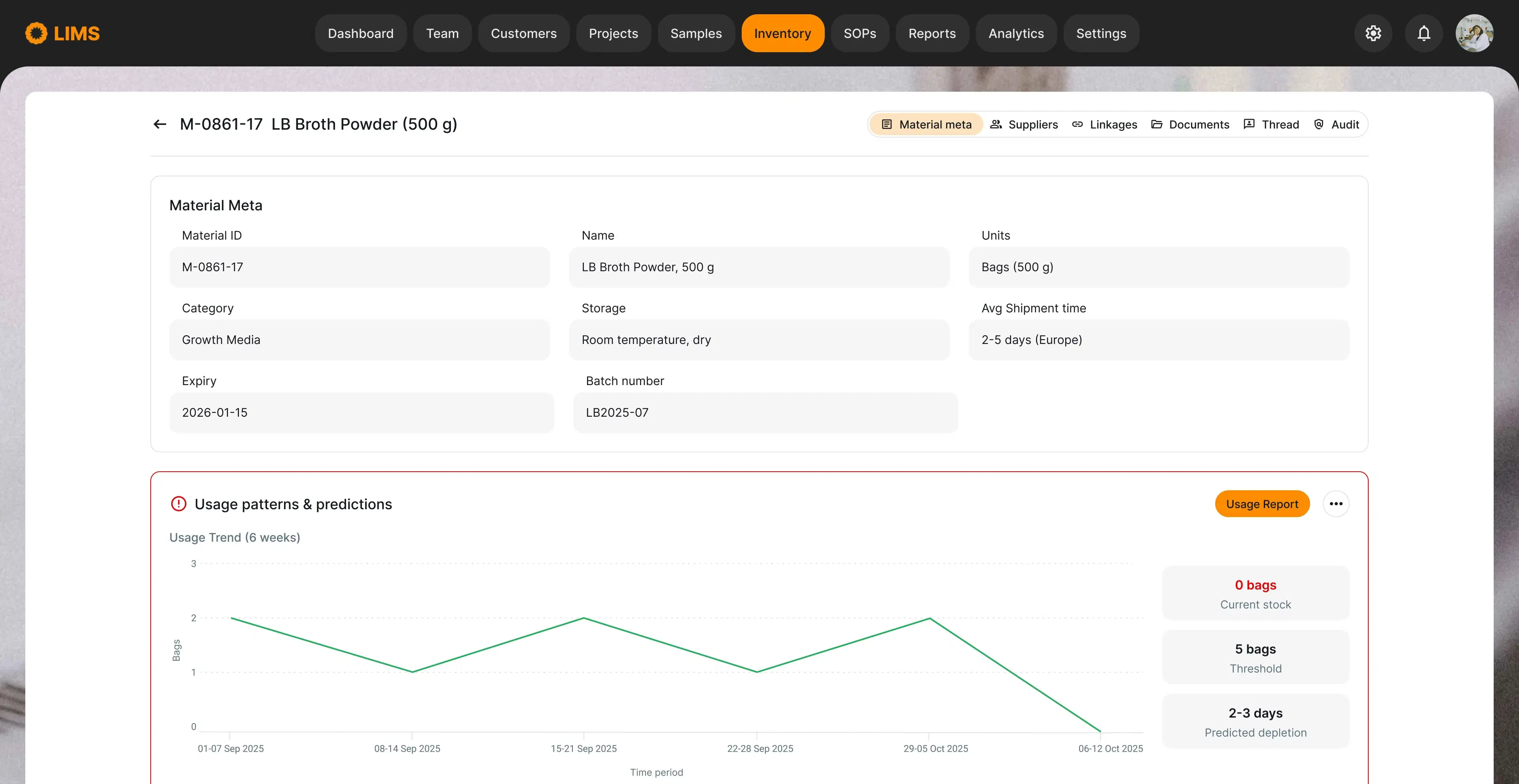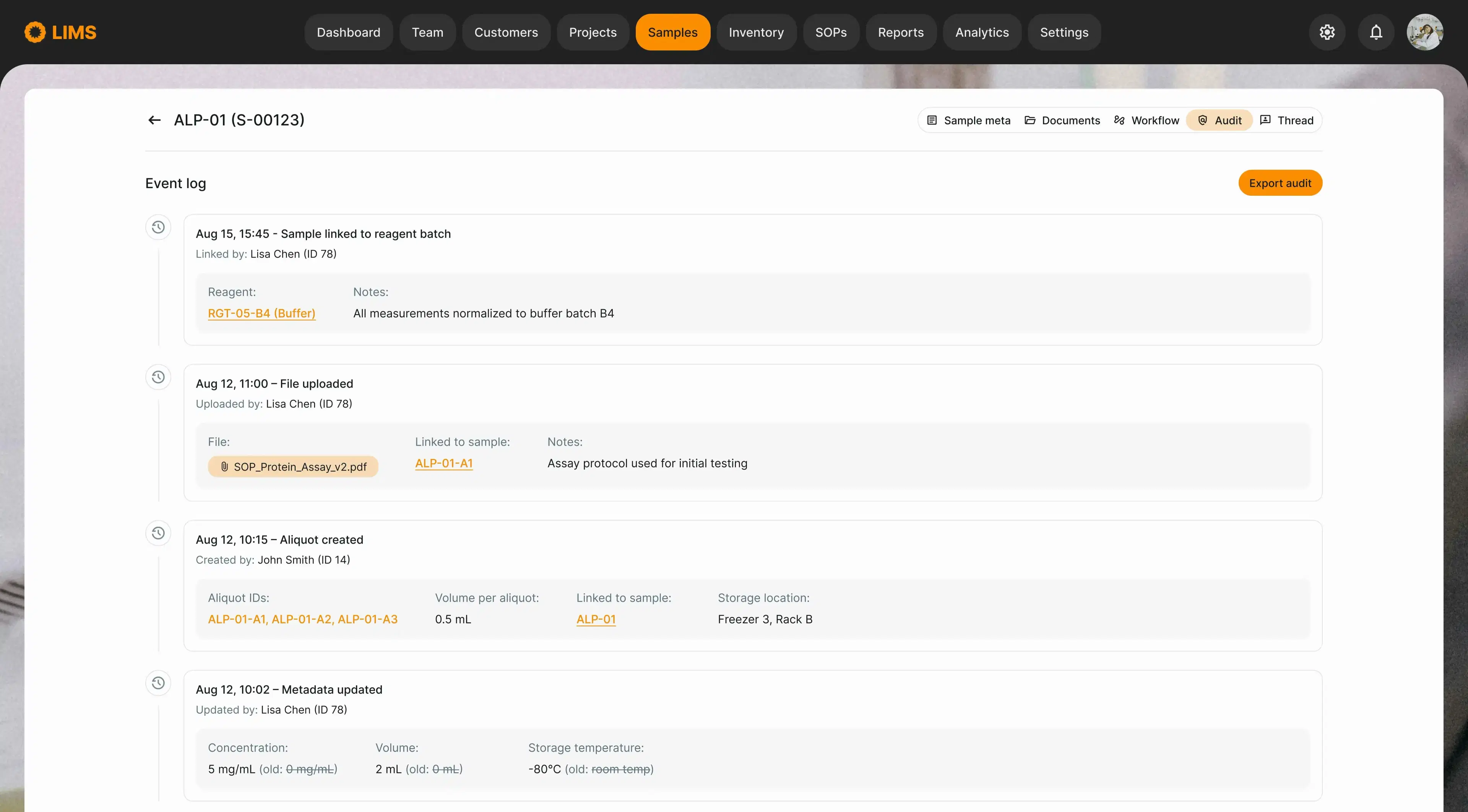There’s one common misconception:
"If we just implement a LIMS/ELN/ERP, everything will be automated and seamless"
Unfortunately, that belief has led many labs into fragmented ecosystems, wanted budgets and frustrated teams.
Tools Alone Don’t Solve Problems
True digital efficiency comes not from isolated tools, but from a connected ecosystem that strategically reflects how the lab actually work.
Without this foundation, labs risk:
- Data silos: disconnected systems, redundant data entry and missing context
- Workflow bottlenecks: instead of automation, labs get more complexity
- Compliance risks: when data is scattered, audit trails and traceability suffer
Digital transformation is not about collecting software - it is about creating systems that think together.
Why a Strategic Stack Beats a Shiny Tool
In the laboratory environment, information flows are complex. Scientists move between instruments, teams and compliance checkpoints constantly. Expecting a single off-the-shelf tool to cover everything is not realistic.
Instead, successful labs rely on the well-integrated stack or custom platforms that unify disparate needs into a cohesive experience. The goal? Traceability, performance and compliance without unnecessary overhead.
Key Components of a Smart Digital Lab
LIMS, the Operational Backbone
A laboratory Information Management System (LIMS) anchors sample tracking, inventory and quality workflows.
It is essential for:
- Sample and reagent tracking with real-time visibility
- Workflow automation to reduce manual errors
- Inventory optimisation to prevent shortages and waste
- Integration with ELNs, ERPs and instruments
Without LIMS, labs struggle to scale and remain compliant as data volumes grow.
ELN, the Digital Brain
Electronic Lab Notebook replaces paper records with digital auditable entries.
It enables:
- Fast, version-controlled documentation
- Secure collaboration across locations
- Enhanced traceability with audit trails
- Easier compliance and IP protection
ELNs accelerate labs by keeping knowledge organised and findable.
ERP, the Planning Engine
An Enterprise Resource Planning system connects lab ops with business operations.
It allows for:
- Unified visibility across purchasing, finance and HR
- Real-time cost tracking tied to lab usage
- Resource planning across the departments
ERP connects science with sustainability.
SDMS, the Knowledge Vault
A Scientific Data Management System provides centralised and structured storage for research data.
It supports:
- Standardised metadata across datasets
- Secure and compliant archiving
- Real-time team collaboration on experimental data
An SDMS keeps research data alive, accessible and usable.
AI & Analytics, the Competitive Edge
Modern labs generate enormous volumes of data. AI and advanced analytics help labs:
- Turn raw data into insights
- Detect trends and anomalies early
- Build predictive models for R&D and clinical success
With AI, labs move from reactive to proactive science.
The cost of getting it wrong
Scattered data, disjoined tools and poor adoption lead to delays, duplicate work, audit risks - and frustrated teams. Most failures aren’t about bad software, but bad integration.
The benefits of getting it right
Integrated, user-friendly systems reduce manual errors by 20% +, speed up regulatory approvals and improve lab efficiency by up to 40% - all while making life easier for scientists.
How to build a Future-Proof Digital Lab
Here’s a proven approach to lab digitalisation that actually works:
- Define the goals: What is your priority? Compliance, speed, scalability, traceability?
- Map your working flows: do not just buy tools - understand where the real pain points are
- Integrate, don’t isolate: choose systems that speak to each other. APIs, not silos.
- MFocus on adoption: the best system is useless if your team avoids it, Train, test, improve.
- Future-proof the stack: think long-term. Will your system scale with your science?
Digital transformation is not about stacking software - it’s all about designing a digital lab that works as hard as your scientists do. When systems are aligned with workflows, the results are measurable: faster insights, better compliance and more time spent on science.
The right tech stack does not just support the lab - it amplifies it.














